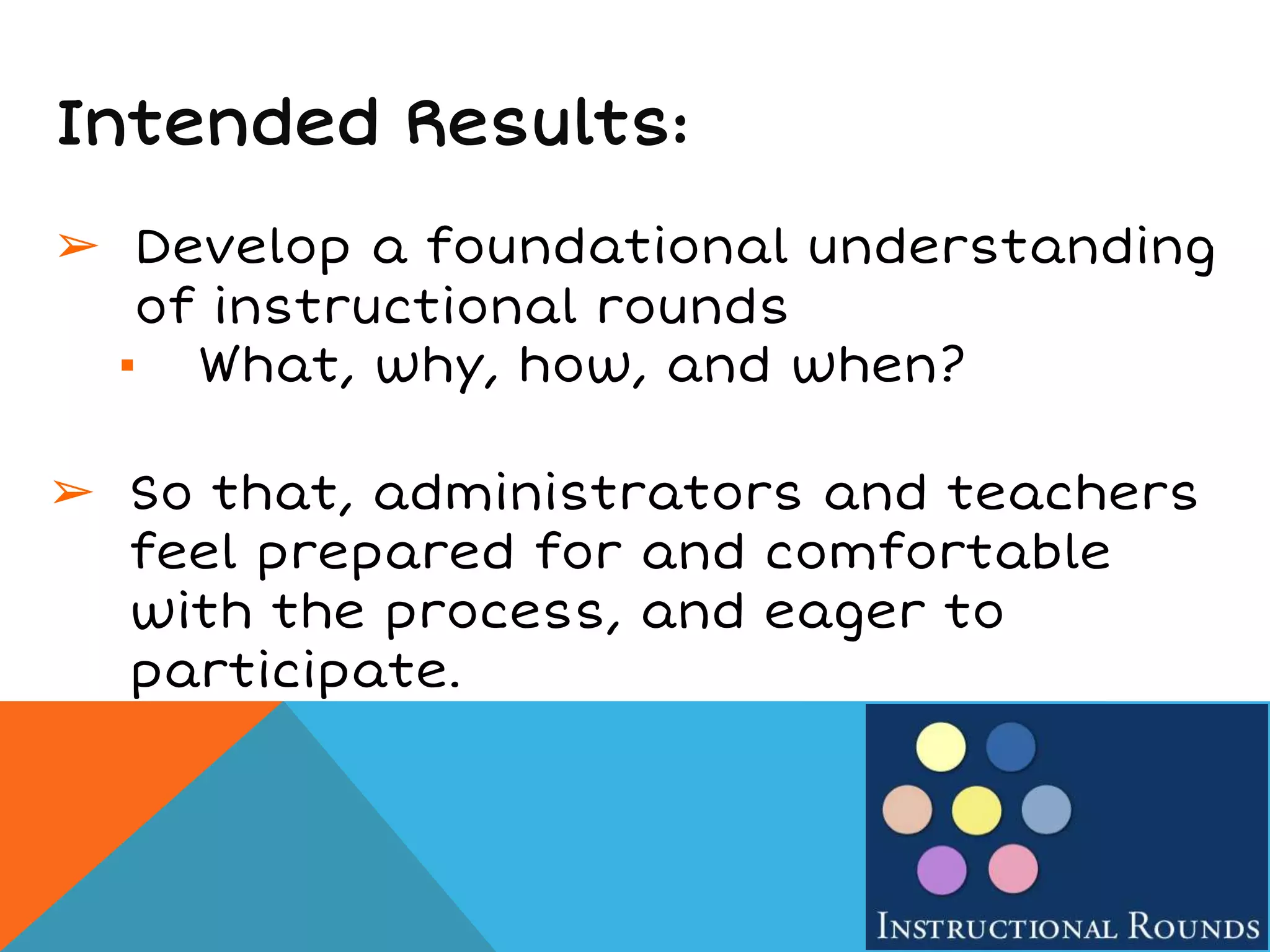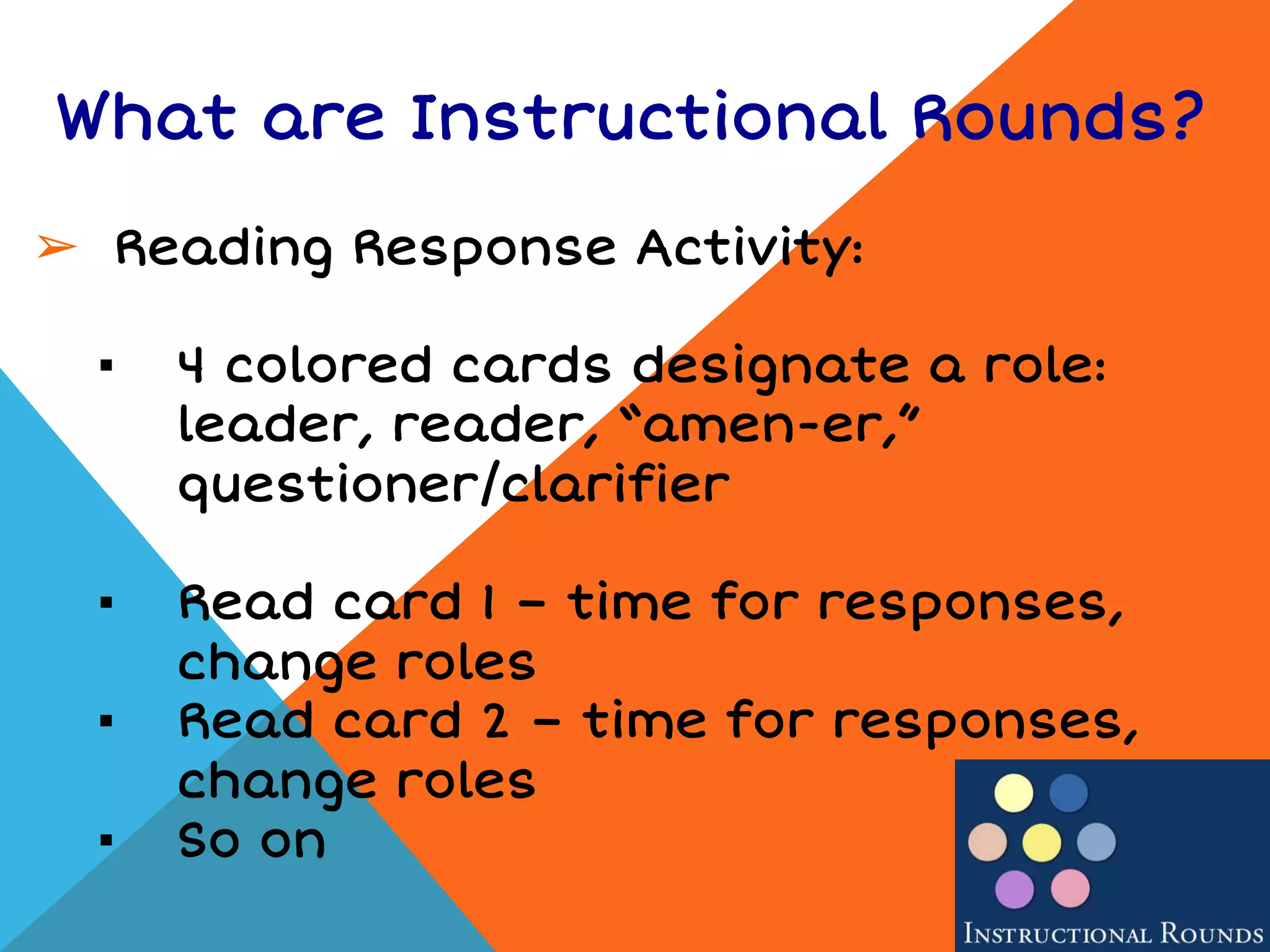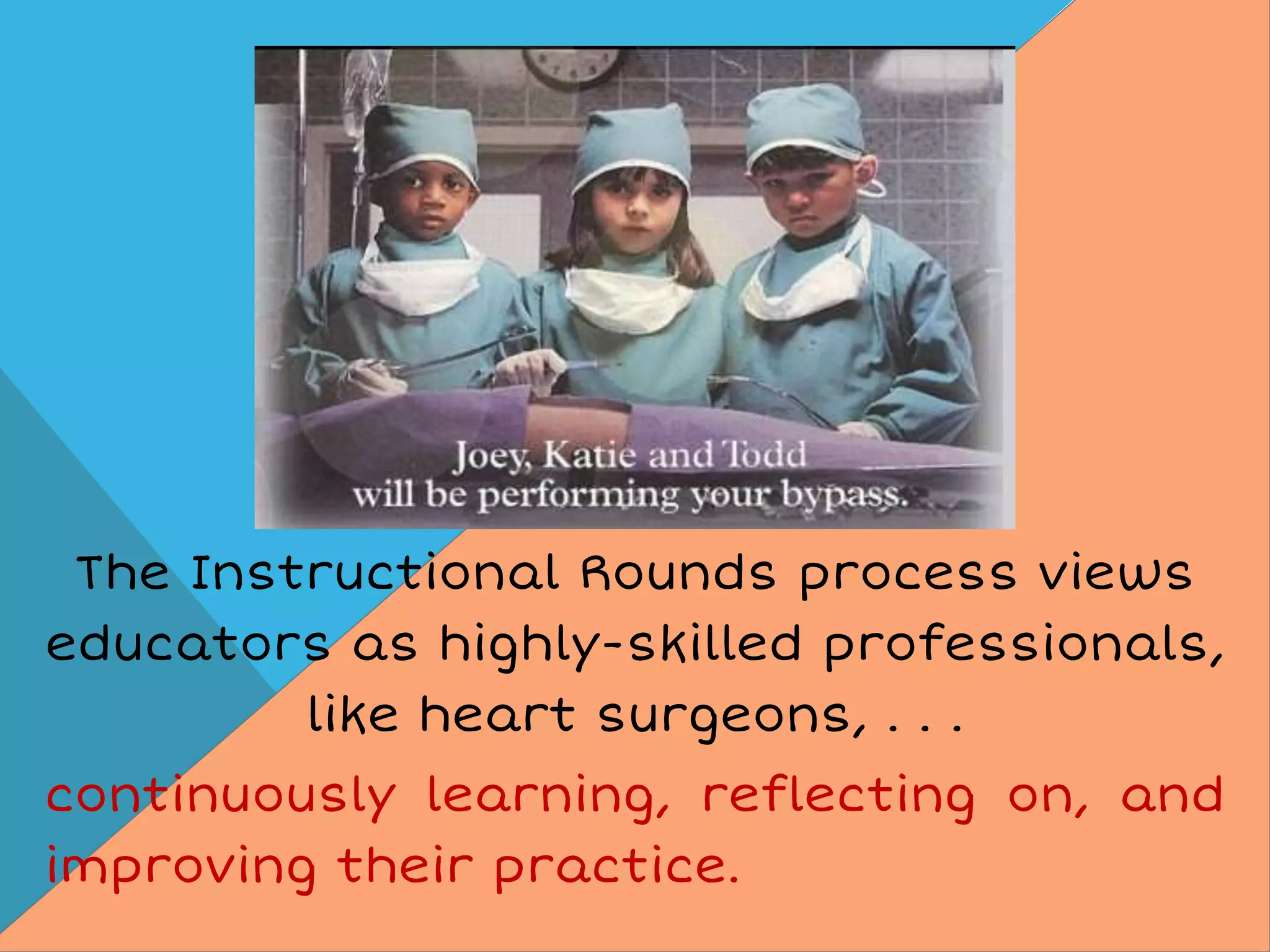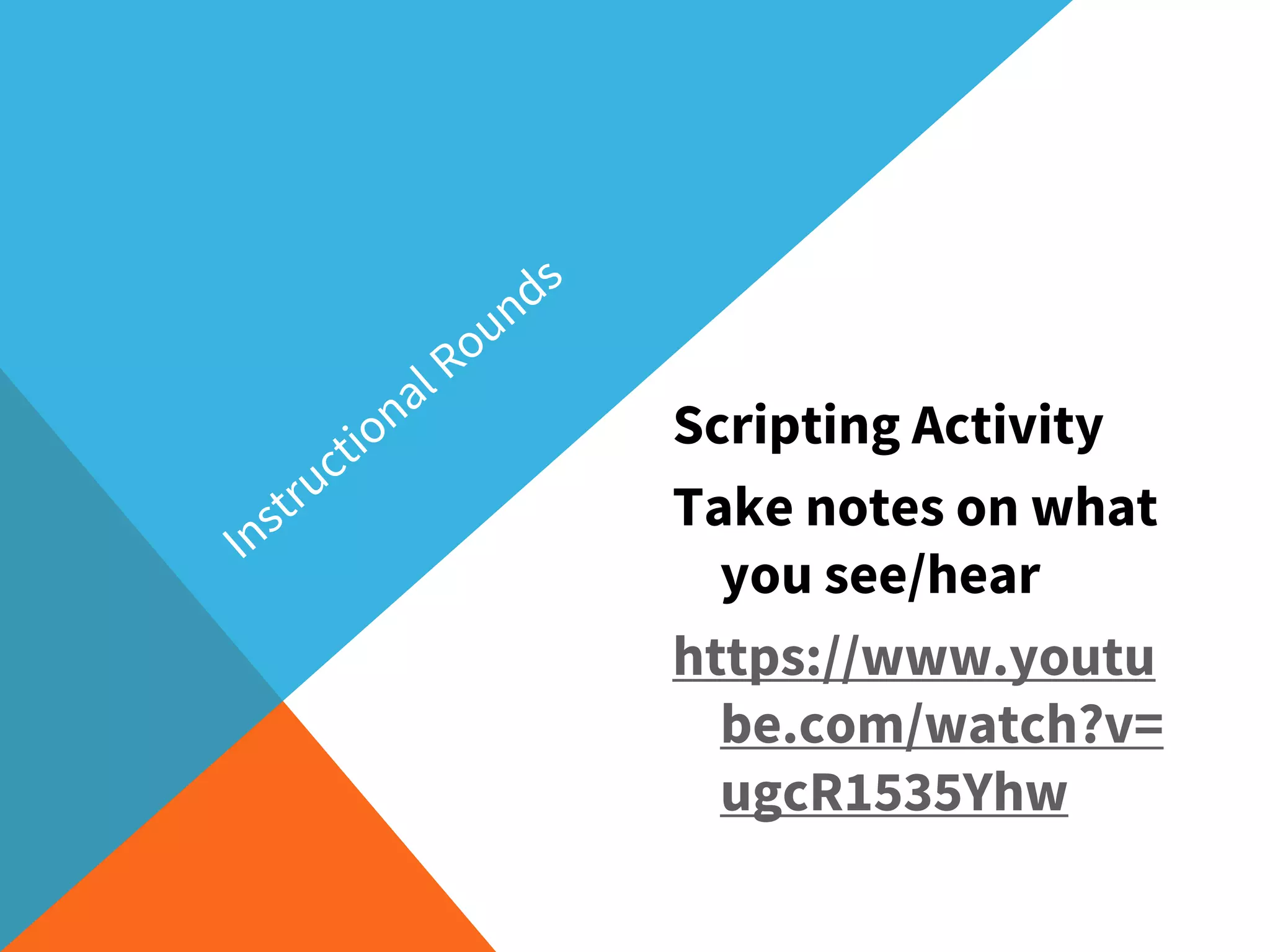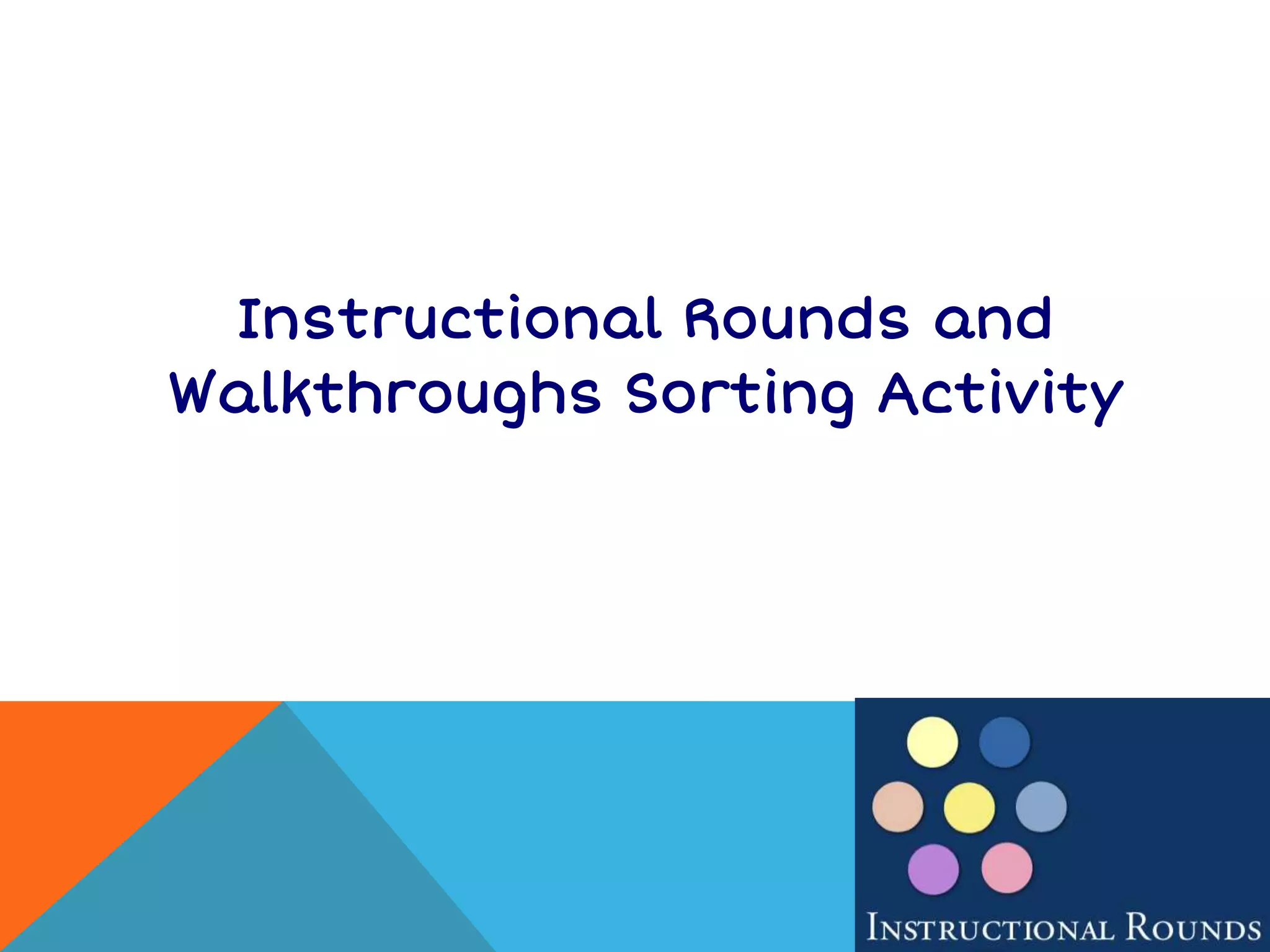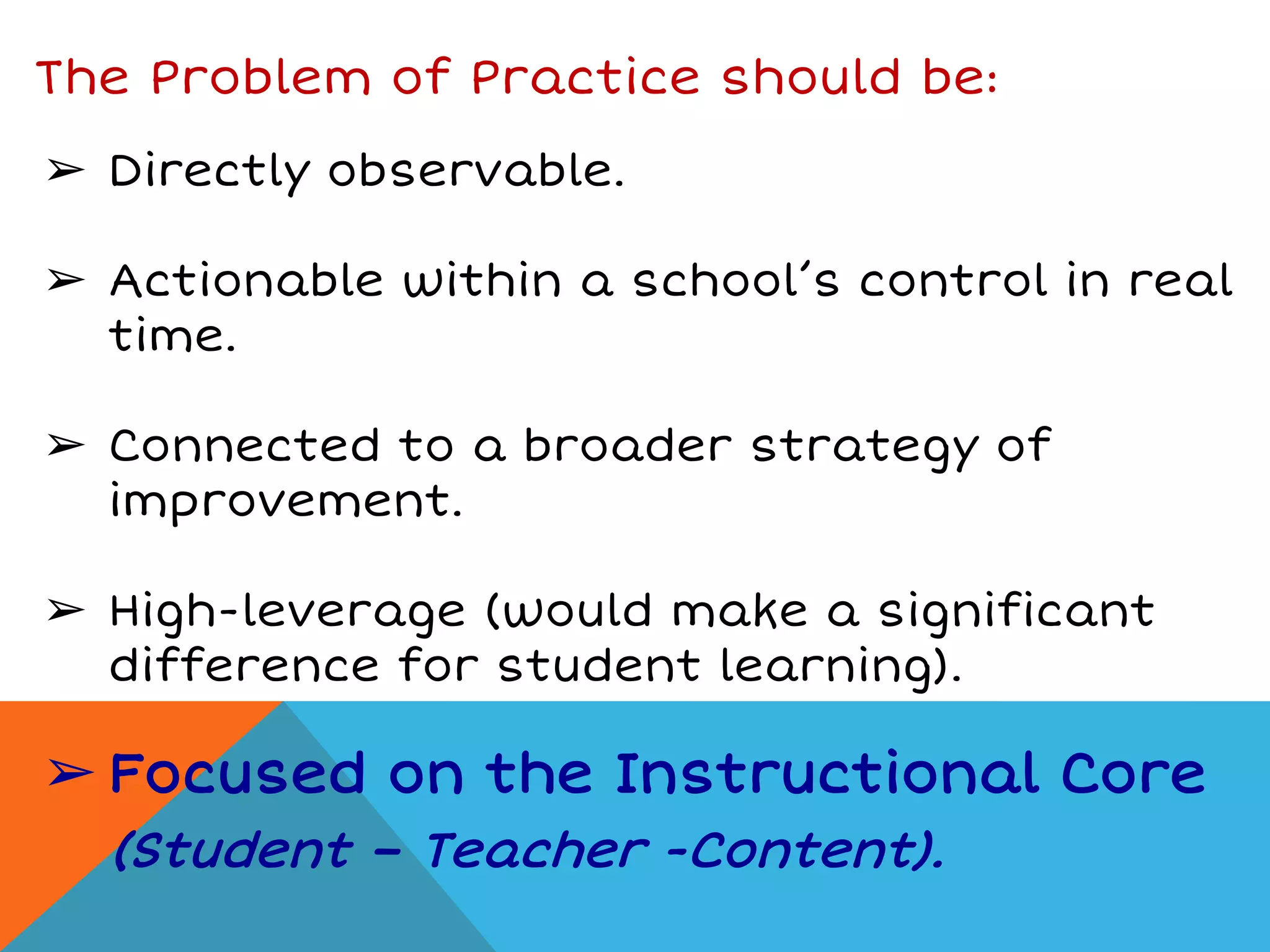This document provides an overview of instructional rounds for administrators and teachers. It explains that instructional rounds are a research-based process modeled after clinical rounds in medicine where teams of educators briefly visit classrooms to observe and collect data around an identified problem of practice in order to accelerate instructional improvement. The document outlines the four steps of instructional rounds: defining a problem of practice, observation of practice, observation debrief, and identifying next steps. It emphasizes that rounds are descriptive, not evaluative, and focus on patterns of practice rather than individual teachers. The overall goal is collective learning to continuously improve teaching and learning.

